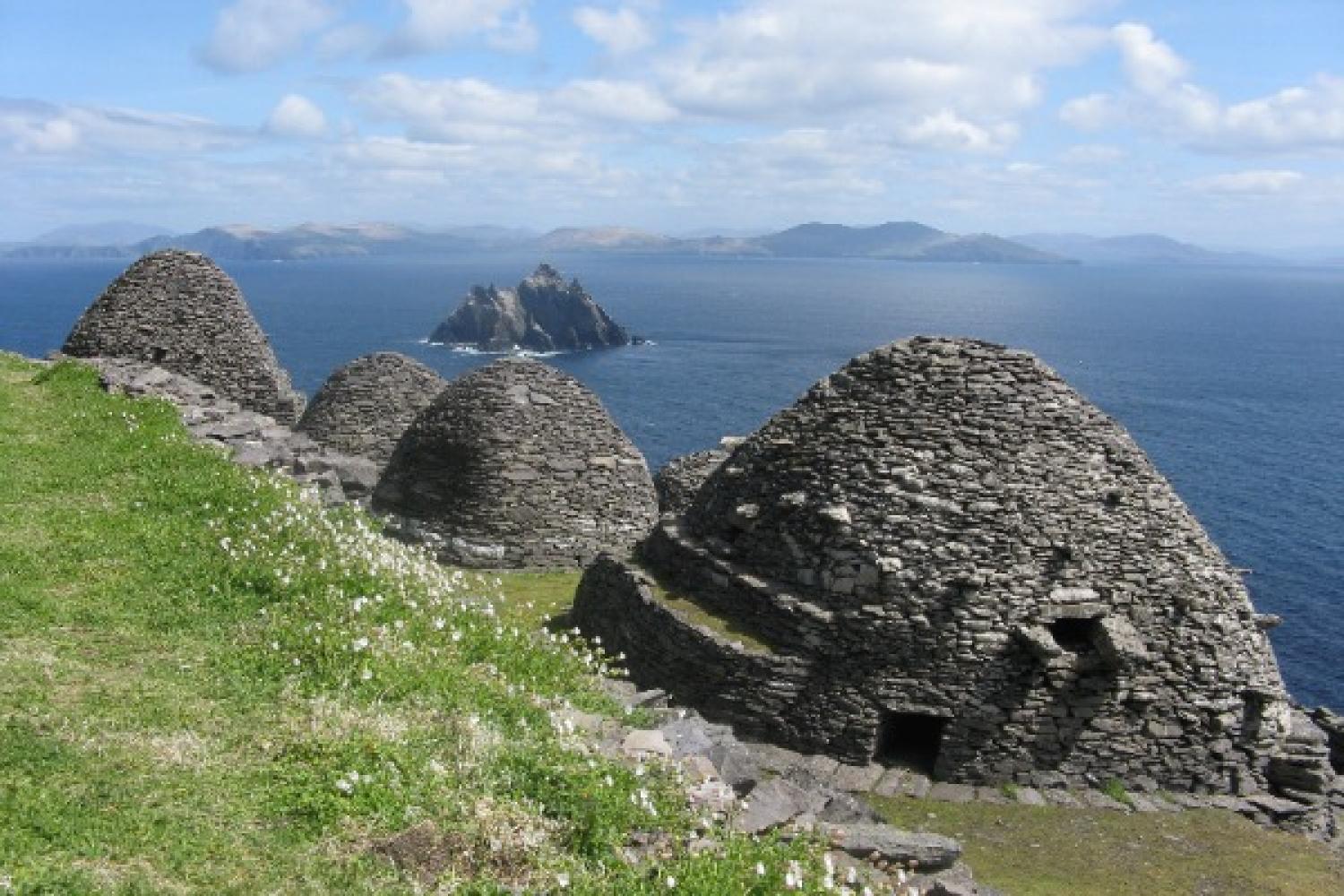
Two steep islands rise from the waters of the Atlantic Ocean just southwest of the Irish coast: Skellig Michael (“Skellig” comes from an Irish word for “stone splinter,” while “Michael” honors the Archangel) and the smaller Little Skellig. (Skellig Michael was featured extensively in Star Wars: The Force Awakens and Star Wars: The Last Jedi as the sanctuary of Luke Skywalker.) Passage to the islands is notoriously difficult: massive swells from the open ocean collide with the rocky islands even when the weather is otherwise calm. Visits to Little Skellig are prohibited, and the only permanent inhabitants of Skellig Michael are a small pod of grey seals and countless sea birds.
Beyond Skellig Michael's geographic remoteness, the island famously bears the ruins of an ancient monastic settlement; in fact, the solitude of Skellig Michael made it an ideal place for the Irish monks. When Christianity found its way to Ireland in the fifth century, monastic life flourished. Knowing that “red martyrdom” (being killed for the faith) was unlikely, many zealous Christians sought “green martyrdom,” giving up their lives in pursuit of worship and self-mortification in remote wildernesses. Skellig Michael provided the ancient monks with the solitude they desired, and the harsh weather (and even harsher sea) provided a constant context and reminder of the life of penance and self-denial they had embraced.
The monastic community that inhabited Skellig Michael was formed in the sixth century, with pious legend attributing the founding to St. Fionan. The monks – who appear to have numbered roughly 12 at any given time – spent their days in prayer, study, and gardening, enduring everything from storms to Viking raids until the thirteenth century, when they moved to a community on the coast. The ruins the monastic community left behind are still well-preserved, as the islands were seldom visited after the monastic community ceased to inhabit the island until pilgrims began to make supervised visits at the end of the twentieth century.
The monks lived high above the reach of the crashing waves, with their community accessible by series of winding steps leading up from the few places that boats could safely land. The buildings on the island are small, taking the form of the Irish “clochán,” beehive-shaped structures with thick walls constructed of small rocks. These structures could be constructed with the rocks that covered the island, and the thick walls helped to ensure that the frequent rains were kept at bay. A total of six such cells were constructed to house the monks, in addition to two larger oratories of the same style. Structures of this type are not unique to Skellig Michael, having been utilized in many Irish monastic communities.
This style of building effectively prohibits the construction of large structures. Communities that utilized them were able to house only two or three monks per cell and required multiple chapels if the community was large. In the case of Skellig Michael, a more stable chapel was constructed centuries after the rest of the community was established, utilizing mortar.
Skellig Michael can be visited today. As the most westerly of all pilgrimage sites in Europe, the well-preserved and remote ruins offer visitors a glimpse into the life of the zealous green martyrs of Ireland.
Photo Attribution A: "Skellig Hives" by Towel401 is licensed under CC BY-SA 4.0.

The First Draught
To receive the Weekly Update in your inbox every week, along with our weekly Lectio Brevis providing insights into upcoming Mass readings, subscribe to The First Draught.

